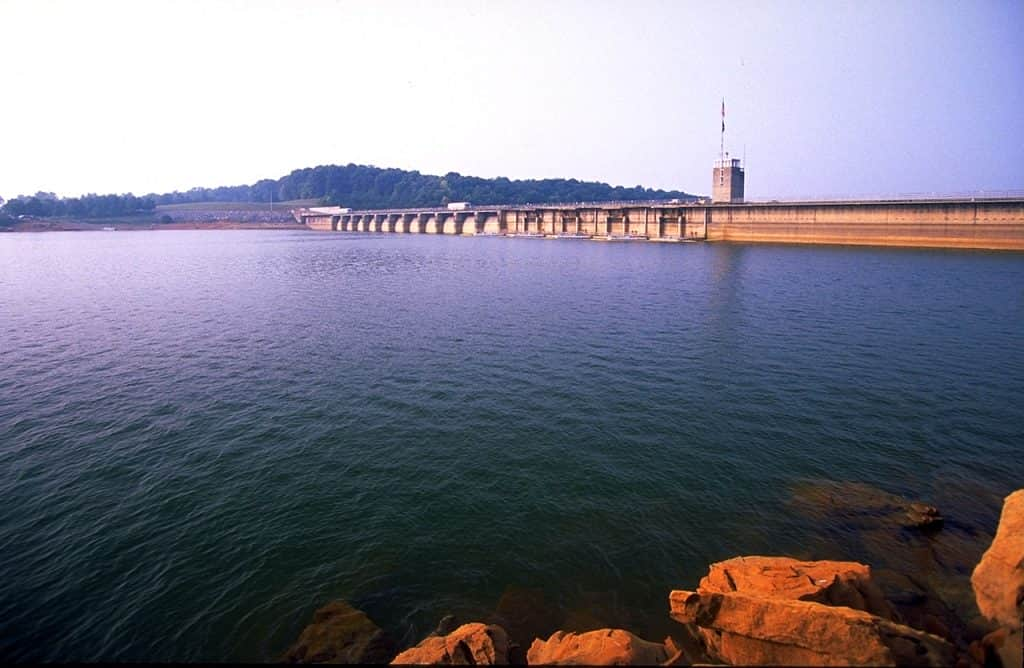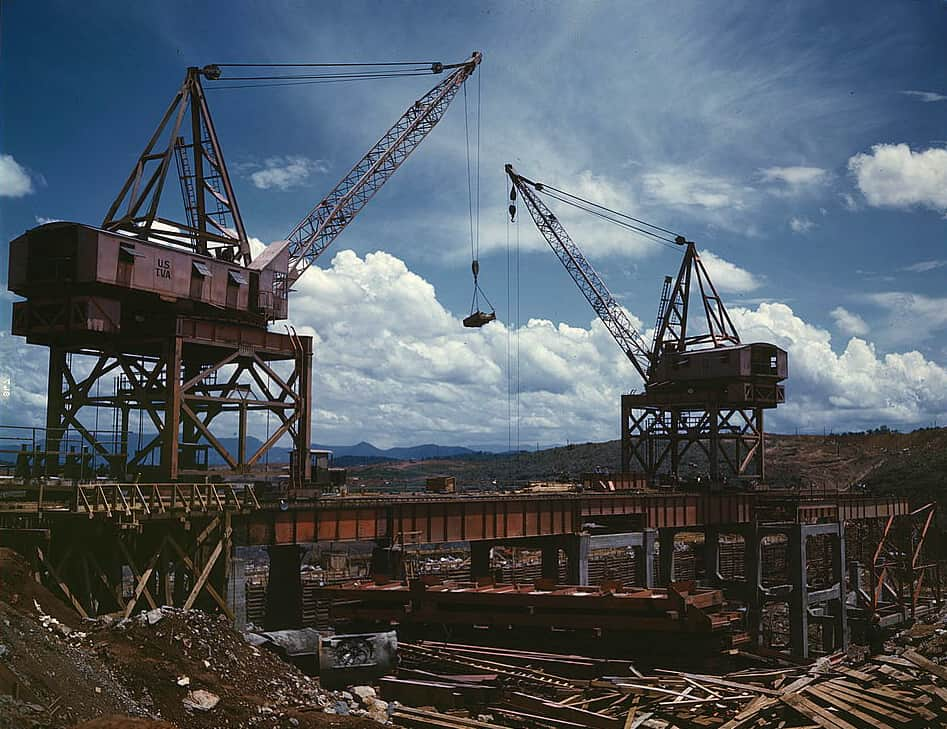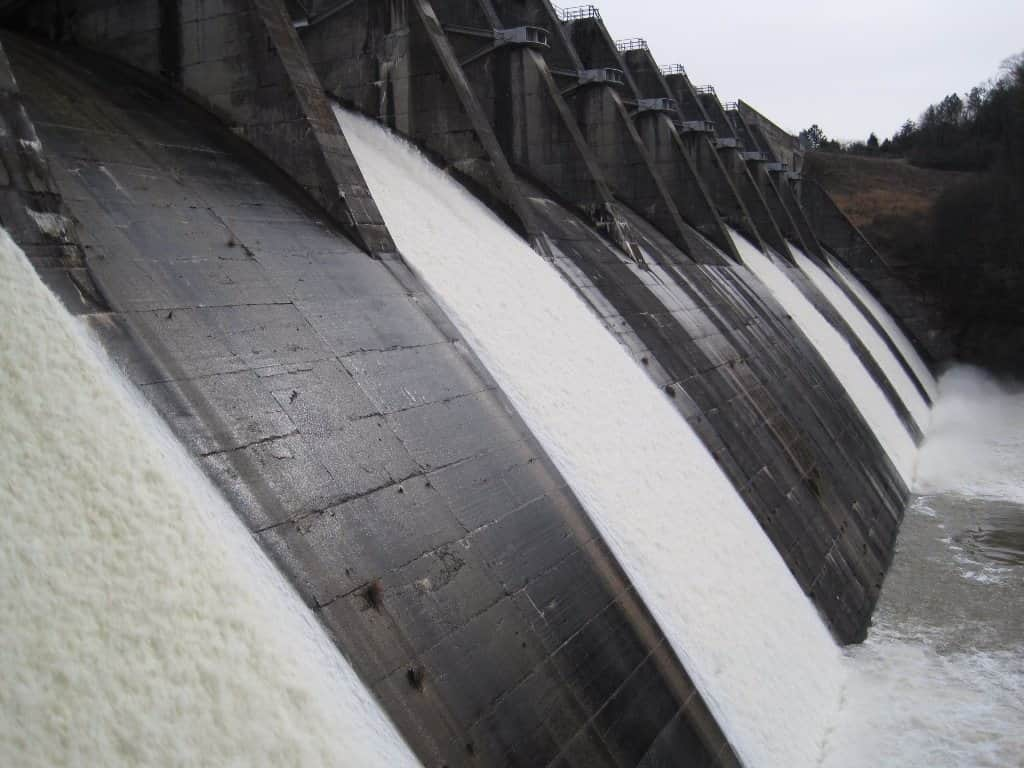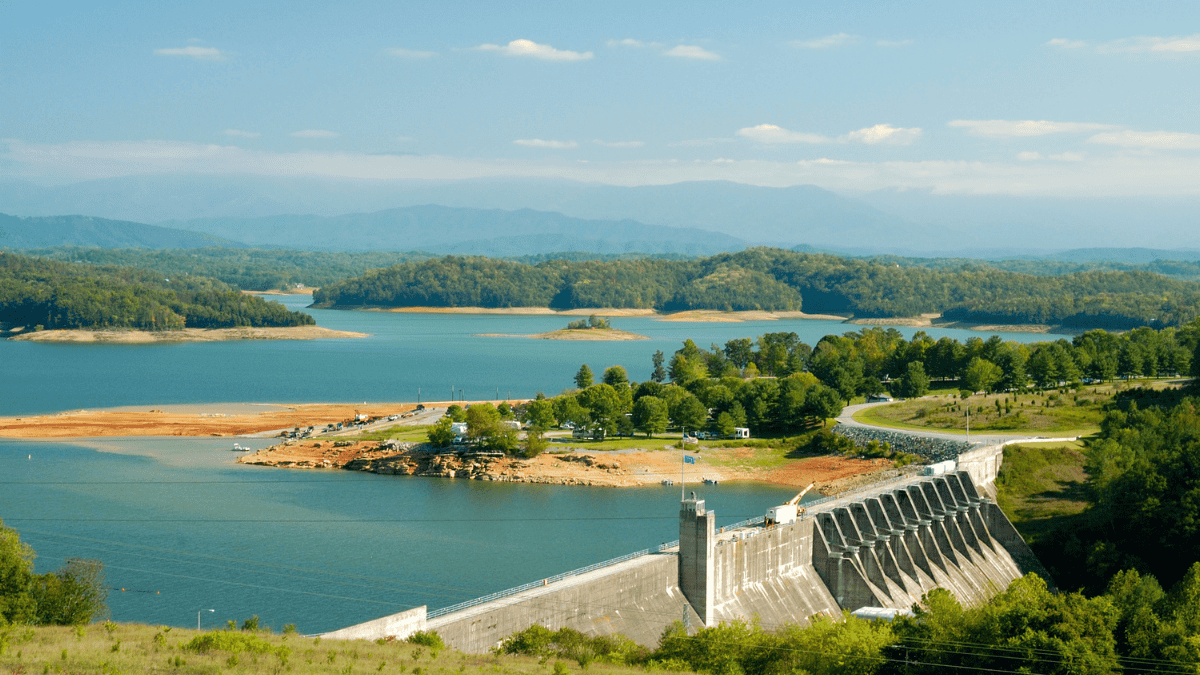You may have heard about Douglas Lake or Dandridge by hearing about Douglas Dam and sometimes the name is used interchangably with the waterbody by locals or frequent visitors. This is because our famous Douglas Lake was actually formed by the Douglas Dam Reservoir in 1942-1943 when the Tennessee Valley Authority built the dam along the French Broad River to provide power for the area needed during World War II. Douglas Dam is an iconic stop on the way to Dandridge, TN, from Sevierville/Kodak along the eponyous Douglas Dam Rd. and it is a working hydroelectric dam still in use today where visitors can stop and enjoy some recreational activities outside of it.
In this post, we’ll share some more information on Douglas Dam from official sources.

From Tennessee River Valley Geotourism:
How to Get There
From US I-40, east of Knoxville, TN:
- Take exit 407.
- Travel south on TN-66 towards Sevierville, turning right onto TN-139.
- Then turn right onto TN-338 – this will take you to Douglas Dam, the 2 campgrounds (signs to the Headwater Campground are after you cross the dam), the day use areas and the Trotter Bluff Trail.
Pet Friendly Notes
Pets welcome but must be kept on a leash no longer than 6-feet. TVA is a partner of Leave No Traceand requests that visitors follow Leave No Trace practices, including picking up after your pet.Pets are not allowed in the beach area.
Recreational Opportunities
Birdwatchers enjoy the fall migration of shore birds, wading birds and other waterfowl that flock to Douglas from late July to early October. The birds rest and feed along the muddy shoreline that is exposed as the level of the reservoir is lowered to winter flood control levels. A good place to observe birds is at Rankin Bottoms Wildlife Management Area managed by the Tennessee Wildlife Resources Agency – you might get lucky and spot an American White Pelican, a Black-necked Stilt or a Wood Stork.
The Trotter Bluff Small Wild Area features a 1.2 mile loop hiking trail through a mature hardwood forest and limestone sinkholes – also a good trail to hike in the spring to catch wildflowers in bloom. For more information on the Trotter Bluff Trail and the nearby Dandridge Partnership Trail, visit the TVA Trails webpage.
https://www.tva.com/Environment/Recreation/TVA-Trails
Campgrounds
There are two campgrounds on the Douglas Dam Reservation: Headwater (above the dam) and Tailwater (below the dam) Campgrounds. There are over 120 campsites between the two campgrounds; almost all the RV sites have water and electric hookups; there are four accessible sites and eleven tent sites. Each campground has a boat launch ramp with a courtesy dock and there is a beach adjacent to the headwater campground. For more information on the Douglas campgrounds see TVA’s Camping webpage.
https://www.tva.com/Environment/Recreation/Camping
Picnicking is popular at the Douglas Dam Overlook where you will find individual tables as well as a pavilion that will seat 200 people; the pavilion can be reserved.
https://www.tva.gov/Environment/Recreation/Recreational-Areas

From TVA.com https://www.tva.com/energy/our-power-system/hydroelectric/douglas
Douglas: Facts & Figures
Douglas Dam is a hydroelectric facility. It has four generating units with a summer net dependable capacity of 182 megawatts. Net dependable capacity is the amount of power a dam can produce on an average day, minus the electricity used by the dam itself.
Douglas Dam is 201 feet high and stretches 1,705 feet across the French Broad River.
Douglas Reservoir provides 513 miles of shoreline and about 28,420 acres of water surface for recreation activities.
In a year with normal rainfall, the water level in Douglas Reservoir varies about 44 feet from summer to winter to provide seasonal flood storage.
The reservoir has a flood-storage capacity of 1,082,000 acre-feet.
Find Douglas Dam at 850 Powerhouse Way, Dandridge, Tenn.

See more on Douglas Lake at:
https://www.tva.com/energy/our-power-system/hydroelectric/douglas
http://www.douglashistory.co.uk/history/Places/douglas_lake+dam.html#.YonMVX4pAdU






